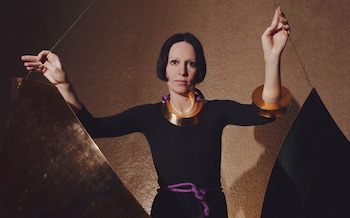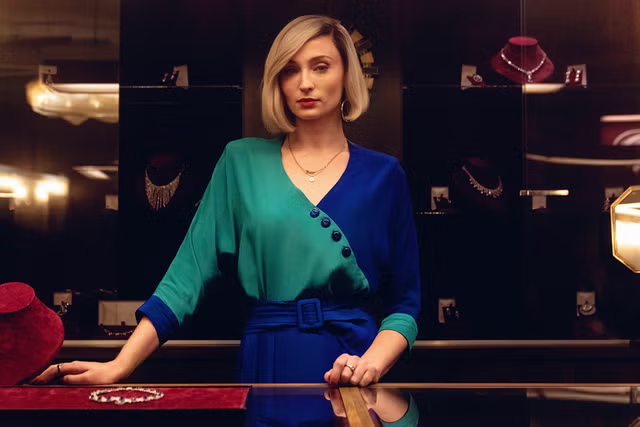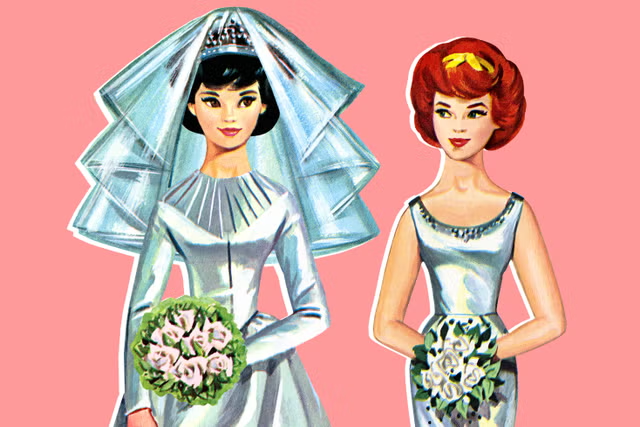
Over the years Debbie Harry’s precision-chiselled features have been captured in museum-worthy portraits by numerous artists, including Andy Warhol who became a personal friend (he threw a party for her at Studio 54 in 1979 to celebrate the release of Heart of Glass) and Robert Mapplethorpe. Chris Stein, the guitarist with whom she founded Blondie in 1974 (and who was her romantic partner for over a decade), is a talented photographer on the side, capturing her at her most candid.
So it’s certainly not lost on her that, aged 79, the singer who was one of the rock world’s most pictured women, is once again in high demand – a festival headliner, a bestselling author, and, this month, a fashion front row star.
Harry has only seen the photographs from her new Gucci campaign on her phone so far, but she sounds relaxed about them being shown to the press. Not for her the paranoid scrutiny that other celebrities engage in when safeguarding their own image. For one thing the images are shot by Nan Goldin, an artist and activist whom she has long admired and is best known for her work documenting the HIV/AIDs and opioids crises.
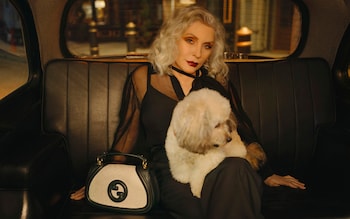
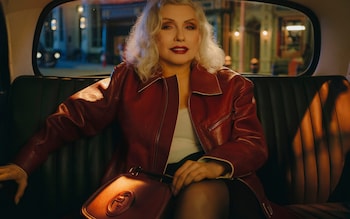
“You need chemistry to create a great photo,” she tells me in her distinctive New York drawl. ‘That’s what I worked out. Once you have that – and good lighting – you can relax.” Relax she did in many of her pictures. It helps that she was never a prude. There are photos from the 70s of Harry wearing a dress that allegedly belonged to Marilyn Monroe jousting with a flaming frying pan in a burned out apartment; Harry wearing a pillow case cinched with duct tape for an outtake of the cover of Blondie’s second album, Plastic Letters. “Our landlord found that pillowcase…He had a good eye,” says Harry.
For Gucci, Goldin shot her in a black taxi, in London. “That’s quite an intimate space,” says Harry, but Nan’s so lovely as well as an outstanding person.’’ Harry finds lots of people lovely, but she’s not afraid to call out the creeps and predators either, which she does frequently, in Face It, her remarkably frank bestselling autobiography, released first in 2019.
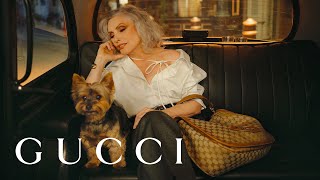
London is one of her favourite cities. Blondie were big in the UK before they broke the US, kicking off their first UK tour in that bastion of punk, Bournemouth in 1977. She was 31 and remembers hanging out at Sex, Vivienne Westwood and Malcolm Maclaren’s boutique on the King’s Road, “but I couldn’t afford any of their things.” That’s how it was for nascent superstars then: precious few freebies, unless they were from skips, and very little in the way of sponsorship. “I think some people found some of my looks offensive, but it was a sign of the times. Everyone was doing that in New York and London – finding lots of treasures from the past and tearing them up a bit.” She still loves diving into a second hand store, “and finding something that plays your heart strings. It’s an adventure. You get great things at the right price…I think if I’d been born in another era, I would definitely have been an explorer of some kind.”
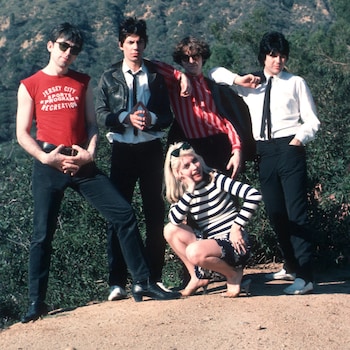
No wonder she’s chuffed to be working with Gucci, and to have a bag named after her. “I’m honoured, really flattered, although I don’t know whether Sabato (de Sarno, Gucci’s creative director) was actually thinking of me when he designed The Blondie, or named it afterwards.” (In fact it’s a 1970s archival Gucci design that was re-launched during Gucci’s Cruise 2025 show at Tate Modern in May 2024). She’s speaking to me from her Chelsea apartment in New York where she lives alone. She has never married or had children.
She has just returned home after sitting in the front row at Gucci in Milan. Today her camera’s switched off, but three days earlier at the show, she wore a white shirt, a black split knee length skirt, thumpingly high chunky red loafers (she loves a comfy shoe these days) and carried a red leather Gucci jacket and a black version of the Blondie bag: edgy but not outrageous. Her blonde hair, more silver these days, was swept up and she wore a pair of those teeny black triangular sunglasses that look as though they’re perching on cheekbones. Only those with outstanding bone structure need apply.
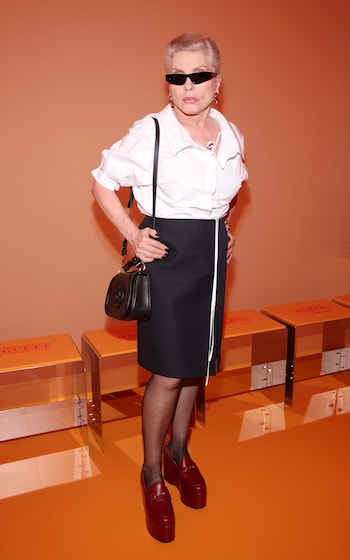
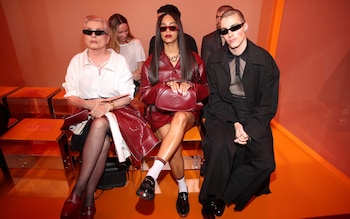
She comes across as someone with a sophisticated understanding of her image, both then and now. Harry and Stein may have had a remarkable knack of writing catchy pop songs, but they always had art school sensibilities. Not for nothing did they open for Iggy Pop in 1977 (David Bowie was on keyboards for Pop) or have Jean-Michel Basquiat feature in the 1980 video for Rapture.
Her Blondie look stemmed from a fascination with Marilyn Monroe, the way her platinum hair shimmered on screen and the way Monroe was constantly belittled by snobs – “She had the smarts.”
Born Angela Trimble in Florida, at three months, Harry was adopted by parents Catherine and Richard Harry who were gift shop proprietors in New Jersey, and renamed Deborah Ann Harry (like her, Monroe was adopted). She may have grown up in middle class suburbia, but she is a gritty New Yorker, heart and soul. There was a brief flirtation with hippy style – “I actually went to Woodstock one year” – but it didn’t last. Thanks to her adoptive mother, who was a keen seamstress, she knew how to sew. When I ask what she thought of the Gucci show, instead of the usual celebrity platitudes, she gives me a detailed summary of the beading and the A-line constructions.
She was 20, and immersed in the downtown New York music scene with The Velvet Underground and Janis Joplin, when she realised she wanted to perform. It took another nine years of experimentation before she founded Blondie with her lover, guitarist Chris Stein, in 1974 – Heart of Glass hit number one in the US in 1979.
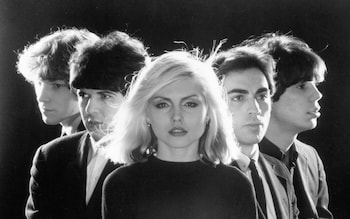
In 2019 Miley Cyrus released a cover of the track and spoke of the debt her generation of female singers owe to Harry. While today’s elite musicians make billions and appear to be largely in charge of their own empires, Harry and Stein were famously cheated out of millions by dodgy management back in the early 80s, signing a series of bad deals which eventually led to all their possessions being seized by the Internal Revenue Service to compensate for unpaid taxes. A band that sold 50 million records, in the end, did not afford her a life of leisure. After Blondie split up in 1982, she had to continue working to pay her way, launching a solo music and acting career which has barely let up to this day.
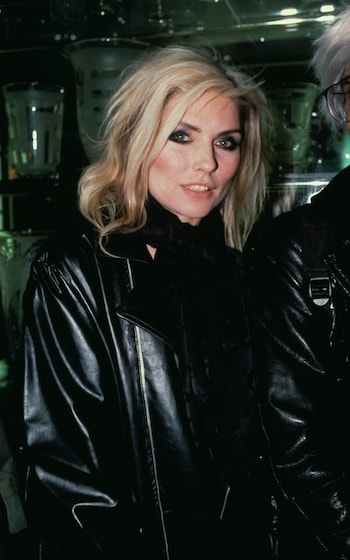
If the band Blondie were launching today, one feels, Harry would undoubtedly be given her own highly lucrative celebrity fashion line in double quick time. Some of her most famous looks, like the white dress she wore on the cover of 1978’s Parallel Lines, the chiffon asymmetric-neckline dress she wore in the 1979 video for Heart of Glass and her uniform of thigh-high patent boots and t-shirts-as-dresses, are consistently described as iconic. She demurs at this. “That’s a word I associate with Russian art rather than celebrity.”
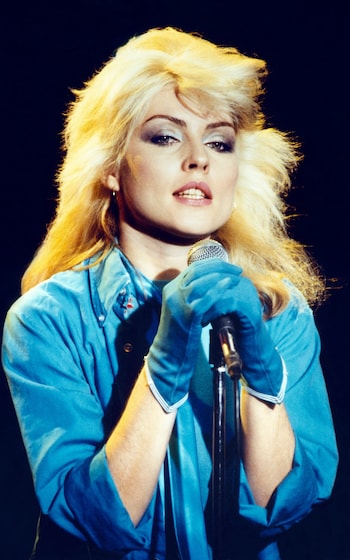
In what turns out to be a typically hair-raising Harry side note, she tells me that the Blondie bag reminds her of a shoulder bag she bought from a vendor near Canal Street more than 50 years ago. “That bag was so strong that when these guys tried to mug me, they couldn’t break the straps on it.” This is one of her tamer anecdotes. There is not much she hasn’t seen – or done. And many of her clothes corroborate the tale.
“I still have that bag somewhere, along with many of my early clothes,” she adds. “They’re all kept really well in a special place. I’ve actually surprised myself at how organised they are.’’ Sometimes she still wears them. “I cherish them. I’ve taken some of the colours and designs and reworked them into more modern applications… I guess I really do have a strong relationship with fashion.”
It is true she worked out quite early on that sex sells, but it would be sex on her terms. That meant finding some of her most provocative pieces in thrift stores, back when they were genuinely cheap – although one of her favourite buys in recent years was a suit – she can’t remember who made it but knows she bought from Harvey Nichols in Manchester during a UK tour last year.
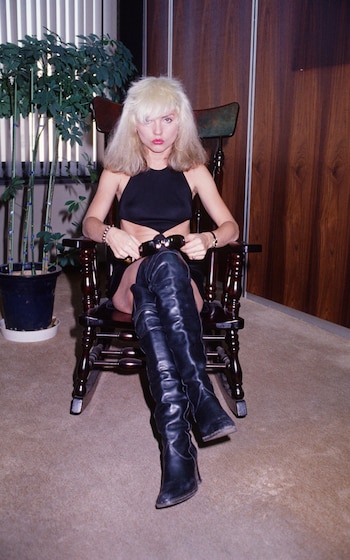
Far from the manufactured styling many celebrities rely on today, Harry would look to her friends to come up with suggestions about what she should wear. Stephen Sprouse, then an up-and-coming designer working for Halston, designed the gorgeous – and for Harry, unusually polished – Heart of Glass chiffon dress, described as “the funkiest of dresses” by one critic at the time. Sprouse, who died at 50 in 2004 and never capitalised financially on the early buzz about him, was, like Harry, a through and through punk with an eye for beauty and glamour. Apart from dressing her, he became known for incorporating graffiti in his designs. “I think he just couldn’t bear seeing me look like a mess, so he would help me,” she says. “Friends would say to me, ‘no not that. Or why don’t you add a bangle?’ I don’t think I ever hired a professional stylist.”
I wonder whether she ever minds that she wasn’t born later, so that she could capitalise on today’s more market-driven and lucrative music scene. Or maybe she thinks the vanilla flavour of so much of today’s popular culture would bore her witless. “Yeah, I do wonder about that sometimes. And I don’t really have an answer. What I also wonder is where today’s counterculture is. [Technology can be] wonderful, but we have access to so much now and nothing has time to ferment.”
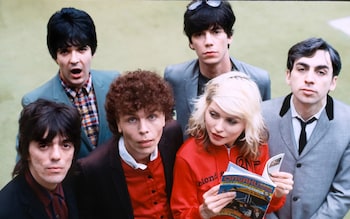
“Truth be told, I’d like to be working a bit more,” she says, even though she recently returned from a long tour that included playing Glastonbury’s Pyramid stage and Coachella last summer. She says that she likes being on the road, even though “everyone wants me to sing the same old songs. I get that. There’s an emotional connection. And I love all those songs.” There are certainly no retirement plans.
She’s currently putting the finishing touches to an album of new material, her ninth since 1988’s Once More into the Bleach. Despite the fact that they split romantically in 1983, she remains close friends and working allies with Chris Stein, whom she nursed through a debilitating auto-immune disease called pemphigus vulgaris which causes burn-like skin blisters and saw him laid low for years in the 1980s. Musically, she’s eternally curious, as open minded as ever and hungry for new experiences. “When I walk onstage every little ache and pain just disappears, even if I have a cold.”
She tried working out with a trainer for a few years, but gave up. “I’ve tried everything at some point,” she says. “These days I do a lot of speed walking with the dogs.” She has two Russian Chins, “of course they’re adorable. I had a bunch more, but they died. I’m practically vegetarian and I do old lady exercises, which is shocking to me. I mean how have I got so old? But I guess I’ve been lucky.” (In 2010 she told an Australian reporter that roughly half the people she hung out with in the 70s and early 80s were dead).
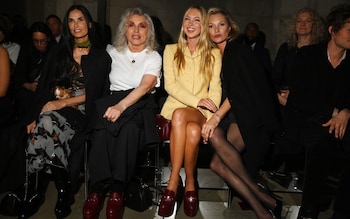
She sounds as unconventional as she always did. Her sangfroid about the missing millions, the burned out apartments, the burglaries, the drug addiction (explicitly retold in Face IT), is bracing. It could also be called fortitude. “That doesn’t mean I don’t also worry, acutely, sometimes. But I’m quite strong. I’ve had my accidents but I seem to be able to adjust and I’m pretty athletic,” she says (she even learned to wrestle for a 1983 Broadway play). ‘‘My motto is just kind of keep going. I don’t recommend that to everyone but it works for me.”
The Gucci Blondie is available now at gucci.com
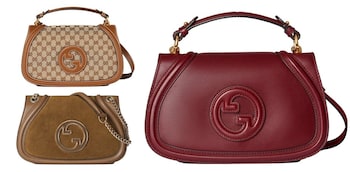
Disclaimer: The copyright of this article belongs to the original author. Reposting this article is solely for the purpose of information dissemination and does not constitute any investment advice. If there is any infringement, please contact us immediately. We will make corrections or deletions as necessary. Thank you.
